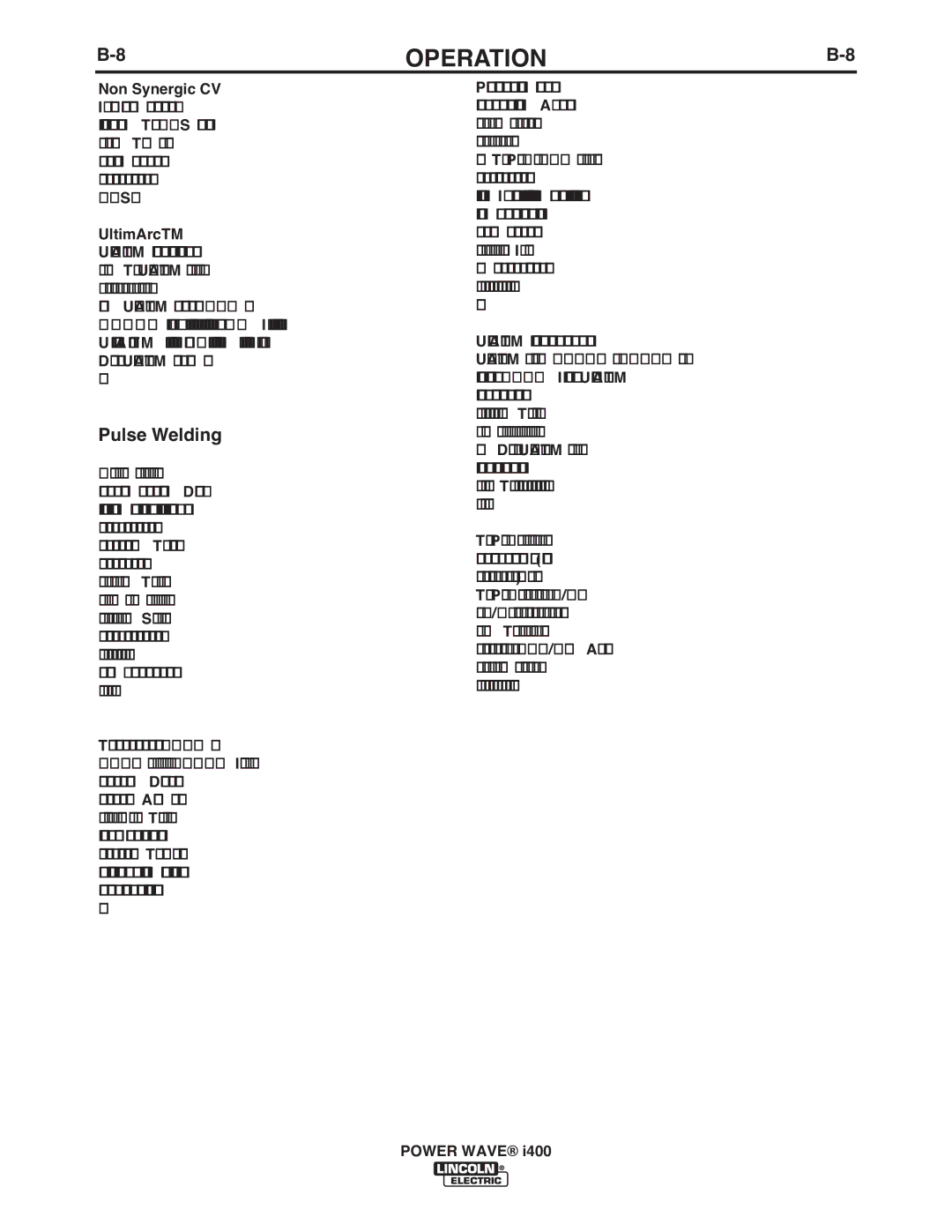OPERATION |
Non Synergic CV
In
UltimArcTM
UltimArcTM adjusts the apparent inductance of the wave shape. The UltimArcTM adjustment is similar to a “pinch” function in that it is inversely proportional to inductance. UltimArcTM is adjustable from
Pulse Welding
When pulse welding, the power source primarily regu- lates the arc current, not the arc voltage. During a pulsing cycle, arc current is regulated from a low background level to a high peak level and then back down to the low background level. The average arc voltage increases and decreases as the average arc current is increased or decreased. The peak current, back ground current, rise time, fall time and pulse fre- quency all affect the average voltage. Since the aver- age voltage for a given wire feed speed can only be determined when all the pulsing waveform parameters are known, a unitless value called “trim” is used for adjusting the arc length.
Trim adjusts the arc length and ranges from 0.50 to
1.50with a nominal value of 1.00. Increasing the trim value increases the arc length. Decreasing the trim value decreases the arc length. Alternately, trim can be displayed as a
Pulse welding modes are synergic; using wire feed speed as the main control parameter. As the wire feed speed is adjusted, the power source adjusts the waveform parameters to maintain good welding char- acteristics. The Power Wave i400 can also be config- ured to use amperage as the dominant control para- meter. In this configuration, as the amperage is adjusted, the power source selects the appropriate wire feed speed, and adjusts the waveform parame- ters to maintain good welding characteristics. In either case, trim is used as a secondary control to change the arc length for material conditions or individual pref- erence.
UltimArcTM adjusts the focus or shape of the arc. UltimArcTM is adjustable from
The Power Wave utilizes adaptive control to compen- sate for changes in the electrical
POWER WAVE® i400
